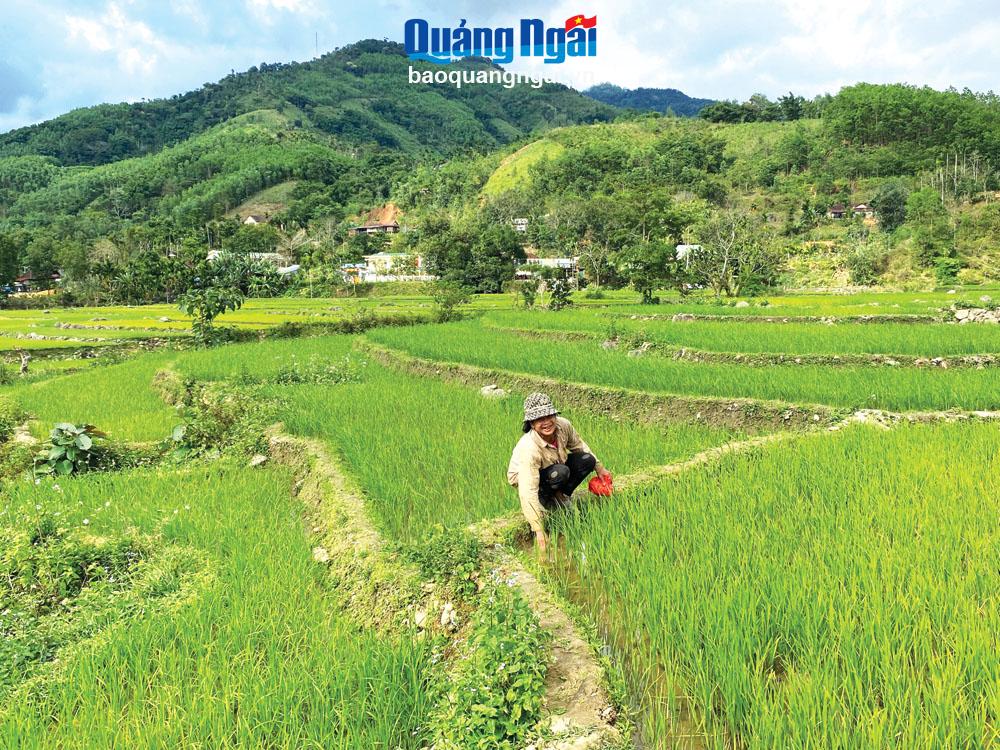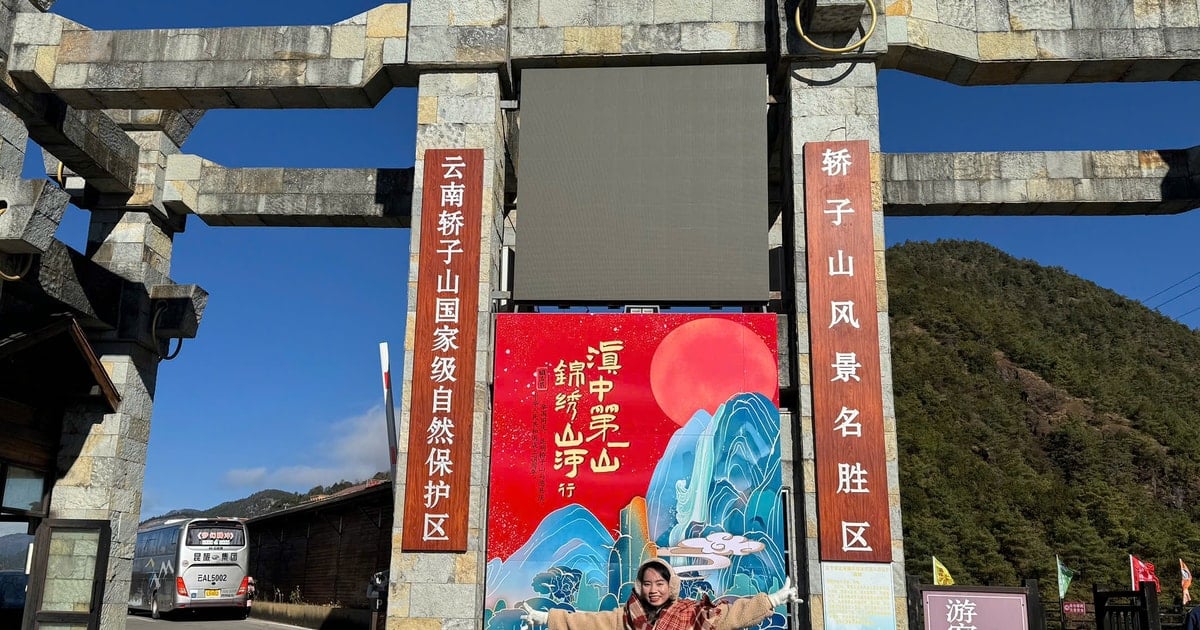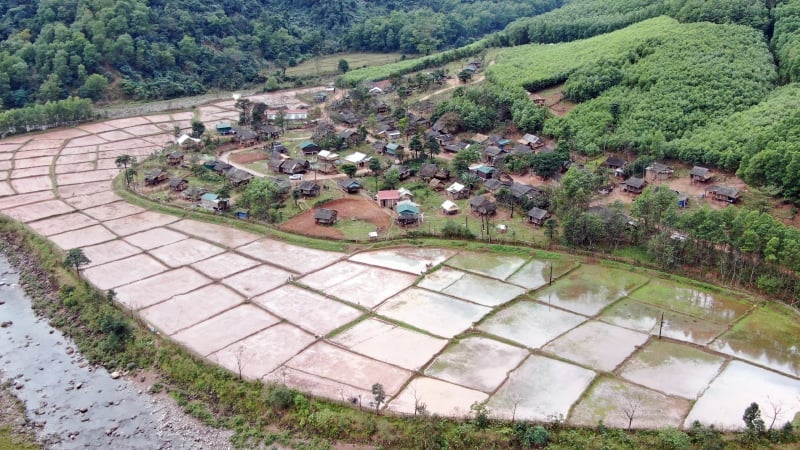(Quang Ngai Newspaper) - In recent days, the constantly changing weather has created favorable conditions for pests to develop. Therefore, people in Son Ha and Son Tay districts often visit their fields and take the initiative to take care of their crops and livestock.
Fruit tree care
After Tet, people in the communes of Son Tay mountainous district proactively go to the fields to take care of rice and fruit trees. This season, guava trees have begun to produce new buds. Farmers are focusing on pruning branches to create strength for the trees to bear fruit; at the same time, clearing grass and fertilizing the fruit orchards to develop. Mr. Dinh Van Thien, in Son Lien commune, shared that this year, the cold and rainy weather has lasted for a long time, so the guava trees have grown more slowly than in previous years. In the past few days, my wife and I have borrowed some people in the village to prune and fertilize the trees. We must take good care of the trees so that they can grow and produce a lot of fruit.
The family of Ms. Dinh Thi Hong, in Son Long commune, grows nearly 800 guava, banana, grapefruit, and durian trees. Of these, the guava has been harvested for 2 years, while the grapefruit has just had its first harvest. “Before, I planted acacia and areca trees without any care, but now growing fruit trees is very different. Not only do I have to fertilize, water, and weed, but I also have to prune and select fruit. This season, my husband and I are there almost every day to take care of the garden. Although it takes more effort than growing acacia or cassava, growing fruit trees brings in high income, so everyone is happy and diligently goes to the garden and fields,” Ms. Hong said.
In Son Tay district, there are currently more than 120 hectares of fruit trees planted in a concentrated manner. The main crops are guava, grapefruit, banana, and orange. According to Pham Nhu Tuan, Head of the Department of Agriculture and Rural Development of Son Tay district, realizing the effectiveness of growing fruit trees, people have proactively bought seeds to plant and expand the area. At the same time, people have learned to go online to learn and apply science and technology to planting and caring for crops to increase productivity and product quality.
 |
| People in Son Tay district regularly visit the fields and take care of the winter-spring rice crop. |
Proactively prevent diseases for plants and animals
In recent days, Ms. Dinh Thi Nga, in Son Thuong commune (Son Ha), often goes to the fields to catch golden apple snails and protect her family's rice fields. Ms. Nga said, after Tet, her family's rice fields were infested with golden apple snails and rats. Although the family has many people, they only have more than 2 sao of rice fields. If they don't take good care of them, they won't have enough rice to eat.
According to statistics from the Department of Agriculture and Rural Development of Son Ha district, in the 2024-2025 winter-spring crop, the locality has planted 2,830 hectares of rice, reaching 100% of the plan. The main varieties are QNg 13, Thien Huong 6, Bac Thinh, Ha Phat 3, Thien Uu 8... Currently, the rice plants are growing and developing quite well, in the tillering, standing, and panicle formation stages. However, due to low temperatures, cold weather at night, and fog in the early morning, pests, diseases, golden apple snails, and rats are highly likely to cause damage.
In addition to crops, frequent weather changes have also affected livestock. Currently, Son Ha district has more than 57,600 livestock; of which, there are nearly 11,800 buffaloes, more than 16,000 cows, and more than 28,000 pigs. After Tet, people began to re-herd and supplement their livestock, but the number is still limited due to unfavorable weather.
Head of the Department of Agriculture and Rural Development of Son Ha district, Dinh Van Chi, said that currently, the weather in the district is still rainy and cold, with a large difference in temperature between day and night, especially in the highlands. Therefore, to proactively prevent and control diseases for livestock and poultry, the Department of Agriculture and Rural Development of the district has coordinated with the People's Committees of communes and towns to send staff to regularly inspect and guide people on disease prevention and control measures, and cover barns. People have proactively devoted a large area to growing elephant grass, ensuring a source of food for livestock.
Article and photos: HONG HOA
RELATED NEWS:
Source: https://baoquangngai.vn/kinh-te/nong-nghiep/202502/bao-ve-cay-trong-vat-nuoi-truoc-dich-benh-0da10cd/


































Comment (0)